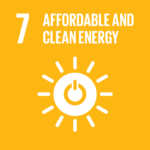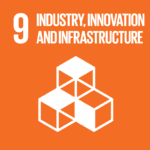In a groundbreaking move to advance renewable energy, PLN Indonesia Power (PLN IP) inaugurated the nation’s largest and most advanced solar panel factory.
The 7-hectare factory, developed by PLN IP’s joint venture, PT Trina Mas Agra Indonesia (TMAI), in collaboration with Trina Solar Co. Ltd. and PT Dian Swastatika Sentosa, aims to revolutionize solar technology in Indonesia. The facility utilizes the Tunnel Oxide Passivated Contact (TOPCon) technology, which delivers a 23.2% efficiency rate—significantly higher than Indonesia’s current average of around 20%.
RELEVANT SUSTAINABLE GOALS



“This factory is built alongside a tier-1 global player in the solar panel industry and is expected to meet the increasing demand for renewable energy in Indonesia,” stated Edwin Nugraha Putra, President Director of PLN IP, highlighting the strategic partnership’s role in ensuring cutting-edge production quality and reliability.
Powering Indonesia’s Renewable Energy Ambitions
With a solar energy potential of 207 gigawatts (GW) across the archipelago, the establishment of this facility aligns closely with Indonesia’s ambitious renewable energy goals. In its initial phase, the factory’s production capacity stands at 1 GWp, with plans to expand to 3 GWp, providing an essential supply of photovoltaic modules for solar power plants nationwide.
“This facility optimizes Indonesia’s solar energy potential for the electrical sector, ensuring greater accessibility to high-efficiency solar components,” said Edwin. This expansion aligns with Indonesia’s drive toward renewable energy growth and energy independence, reducing reliance on imported solar components and promoting the use of domestically produced goods.
Economic and Environmental Impact
The factory’s development brings a dual benefit: it not only advances Indonesia’s clean energy transition but also creates job opportunities for the community, contributing to local economic growth. Additionally, the facility aligns with Indonesia’s Local Content Requirement (TKDN) goals, supporting the domestic renewable energy industry by fostering local expertise and production.
“The high TKDN achieved here will significantly strengthen the domestic industrial sector’s independence, particularly in renewable energy,” Edwin emphasized. With increased local production, Indonesia can reduce dependence on imported components and establish a more self-sufficient renewable energy sector.
The launch of PLN IP’s solar panel factory signals a monumental shift toward sustainable energy in Indonesia, underscoring the country’s dedication to reducing carbon emissions while bolstering economic growth.
Lead image courtesy of PLN Indonesia Power (President Director of PLN Indonesia Power, Edwin Nugraha Putra, showcases a solar panel module produced using Tunnel Oxide Passivated Contact (TOPCon) technology, achieving an efficiency rate of up to 23.2%)
You may also be interested in :
Floating Solar Power In Batam : Indonesia’s Path For Achieving Net Zero Emissions





